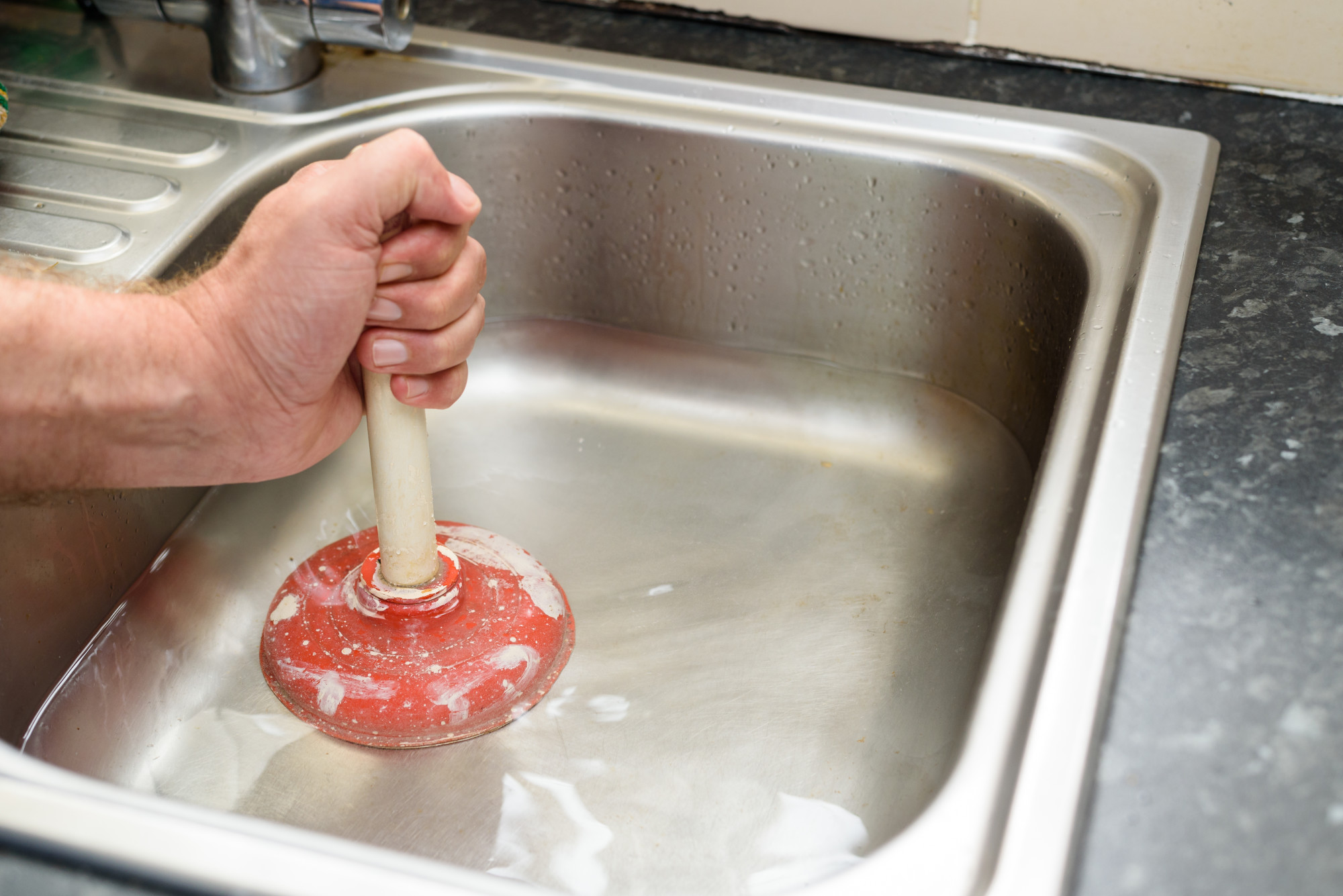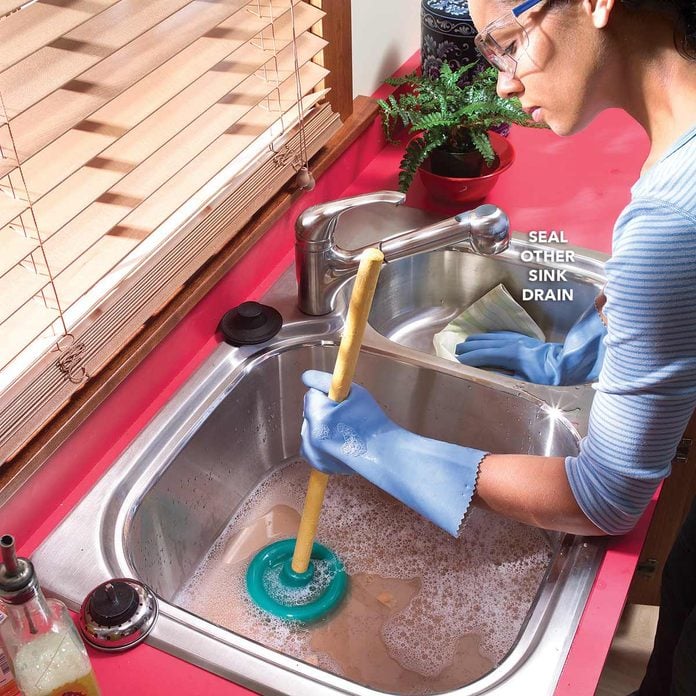Utilizing Plungers and Drain Cleaners: Professional Tips
Utilizing Plungers and Drain Cleaners: Professional Tips
Blog Article
They are making a few good points related to How to Unclog Your Sink with a Plunger overall in this post beneath.

Introduction
Correct maintenance of house drains is important for protecting against blockages and ensuring smooth water flow. Among the trick tools in every home owner's toolkit is the bettor, along with numerous drain cleansers designed to deal with persistent blockages properly. This short article checks out just how to use plungers and drainpipe cleansers effectively to keep your drains streaming openly.
Area 1: Understanding Plungers
Kinds of Plungers
There are a number of kinds of bettors readily available, each made for various sorts of drains pipes and obstructs. One of the most usual kinds consist of cup plungers, flange plungers, and accordion plungers.
Just How Plungers Job
Bettors service the principle of creating pressure and suction to remove obstructions. When effectively used over a drainpipe, they develop a vacuum that can take out debris or break up blockages.
Choosing the Right Plunger
Selecting the right plunger relies on the sort of drainpipe and the nature of the obstruction. Cup plungers are optimal for sinks and bathtubs, while flange bettors are better fit for bathrooms due to their layout.
Common Blunders with Bettors
Staying clear of these mistakes makes certain efficient plunging: inappropriate seal around the drain, inadequate pressure, and unclear surrounding debris.
Section 2: Utilizing Plungers Successfully
Prep work
Prior to plunging, guarantee the plunger covers the drain entirely and creates a limited seal. Clear any type of visible particles around the drain opening.
Technique
Beginning with mild plunging activities to construct suction. Boost stress slowly, using a steady rhythm. Repeat as needed until the drainpipe clears.
Repairing Tips
If plunging does not work, attempt adjusting the seal, using oil jelly for a much better seal, or making use of a different sort of bettor.
Section 3: Recognizing Drainpipe Cleaning Company
Types of Drainpipe Cleaners
Drain pipes cleansers can be chemical or chemical. Chemical cleansers make use of solid chemicals to liquify blockages, while enzymatic cleaners use all-natural enzymes to break down raw material.
Just How Drainpipe Cleansers Work
Chemical cleansers respond with blockages to liquify them, while chemical cleaners break down organic materials like hair and oil without harming pipelines.
Security Factors to consider
Constantly wear gloves and eye defense when utilizing chemical drain cleaners. Make certain sufficient air flow and comply with maker directions carefully.
Eco-Friendly Alternatives
Think about utilizing vinegar and baking soft drink or enzyme-based cleansers for eco-friendly options that are safer for pipes and the environment.
Area 4: Making Use Of Drainpipe Cleaning Company Properly
Application Strategies
Put chemical cleaners directly right into the drainpipe opening. Enable them to help the recommended time prior to purging with hot water. Enzymatic cleansers ought to sit over night.
Safety measures
Avoid blending different types of cleansers, as this can produce toxic fumes. Never ever use chemical cleansers together with a plunger, as spilling can occur.
Taking Care Of Persistent Blockages
For consistent blockages, think about using a plumbing serpent or calling a specialist plumbing professional to avoid damage to pipes.
Verdict
To conclude, comprehending how to make use of plungers and drainpipe cleansers properly is necessary for preserving healthy and balanced plumbing systems. By picking the right tools and strategies, property owners can deal with minor clogs and avoid significant pipes problems down the line.
How To Properly Use A Plumbing Snake To Clear Drains
When any drain clogs in our home arise, we tend to gravitate toward the plunger and little else. In cases where the plunger and its vacuum-created pressure are not able to clear clogs, many immediately move to harmful chemicals or simply call their plumber to fix the issue.
we’re happy to help with all drain cleaning needs and concerns. This includes informing you on a few other home remedies you may have at your disposal for minor to moderate clogs, one of which is the use of a plumbing snake. Many people have never used one of these before – let’s go over the steps to take when your drain clogs and you have a plumbing snake available.
Attempt Plunger Use
The first step here, as we noted above, should indeed be to grab your plunger when you notice a drain clog and attempt to resolve it this way. If you’re unsure how to use a particular type of plunger, our plumbers can answer any questions you have. If this doesn’t do the trick, however, you move on to the snake.
Locate And Prepare Snake
A plumbing snake is a metal or plastic device that’s generally about a quarter of an inch thick. It’s design with significant extensions, meant to reach down into your clogged drain and push the clog out. Snakes also contain drain augers that will latch onto and push stubborn blockages.
If your plunger doesn’t clear a clog, locate your snake and bring it to the drain in question. We also recommend keeping a bucket nearby to collect the clog once you pull it out, plus we’d advise wearing goggles and possibly protective gloves.
Feed Snake
Once you’re ready to go, feed the snake slowly down the drain, using the crank device it comes with to keep it moving until it finds the clog. Once this happens, much of the clog will be latched onto the coil so you can pull it out, while the rest will simply break up and flow downward.
Detach Debris
Remove the snake slowly from the drain, and once you’ve done so, pick off any debris that’s stuck to the coil. This is another area where wearing gloves is a must.
Flush Drain
Finally, take a few minutes to ensure the snake has done its job correctly. If you’ve been using it on a toilet, flush the toilet a couple times and make sure everything flows well. If you’ve used it on a different drain, flush it with some room temperature water.
https://www.mybuddytheplumber.com/blog/how-to-properly-use-a-plumbing-snake-to-clear-drains/

Application Strategies
Put chemical cleaners directly right into the drainpipe opening. Enable them to help the recommended time prior to purging with hot water. Enzymatic cleansers ought to sit over night.
Safety measures
Avoid blending different types of cleansers, as this can produce toxic fumes. Never ever use chemical cleansers together with a plunger, as spilling can occur.
Taking Care Of Persistent Blockages
For consistent blockages, think about using a plumbing serpent or calling a specialist plumbing professional to avoid damage to pipes.
Verdict
To conclude, comprehending how to make use of plungers and drainpipe cleansers properly is necessary for preserving healthy and balanced plumbing systems. By picking the right tools and strategies, property owners can deal with minor clogs and avoid significant pipes problems down the line.
How To Properly Use A Plumbing Snake To Clear Drains
When any drain clogs in our home arise, we tend to gravitate toward the plunger and little else. In cases where the plunger and its vacuum-created pressure are not able to clear clogs, many immediately move to harmful chemicals or simply call their plumber to fix the issue.
we’re happy to help with all drain cleaning needs and concerns. This includes informing you on a few other home remedies you may have at your disposal for minor to moderate clogs, one of which is the use of a plumbing snake. Many people have never used one of these before – let’s go over the steps to take when your drain clogs and you have a plumbing snake available.
Attempt Plunger Use
The first step here, as we noted above, should indeed be to grab your plunger when you notice a drain clog and attempt to resolve it this way. If you’re unsure how to use a particular type of plunger, our plumbers can answer any questions you have. If this doesn’t do the trick, however, you move on to the snake.
Locate And Prepare Snake
A plumbing snake is a metal or plastic device that’s generally about a quarter of an inch thick. It’s design with significant extensions, meant to reach down into your clogged drain and push the clog out. Snakes also contain drain augers that will latch onto and push stubborn blockages.
If your plunger doesn’t clear a clog, locate your snake and bring it to the drain in question. We also recommend keeping a bucket nearby to collect the clog once you pull it out, plus we’d advise wearing goggles and possibly protective gloves.
Feed Snake
Once you’re ready to go, feed the snake slowly down the drain, using the crank device it comes with to keep it moving until it finds the clog. Once this happens, much of the clog will be latched onto the coil so you can pull it out, while the rest will simply break up and flow downward.
Detach Debris
Remove the snake slowly from the drain, and once you’ve done so, pick off any debris that’s stuck to the coil. This is another area where wearing gloves is a must.
Flush Drain
Finally, take a few minutes to ensure the snake has done its job correctly. If you’ve been using it on a toilet, flush the toilet a couple times and make sure everything flows well. If you’ve used it on a different drain, flush it with some room temperature water.
https://www.mybuddytheplumber.com/blog/how-to-properly-use-a-plumbing-snake-to-clear-drains/

We had been made aware of that report about How To Use Your Toilet Plunger Correctly in 5 Easy Steps through a friend on our other web property. Sharing is good. Helping others is fun. Thanks for your time invested reading it.
Get An Estimate Report this page